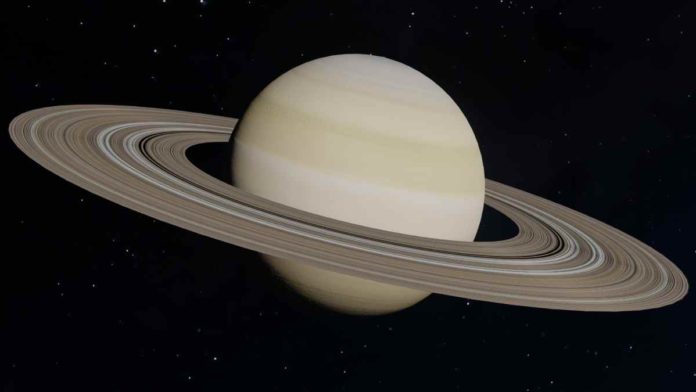UNITED STATES: Saturn, the ringed jewel of our solar system, has long captivated astronomers and space enthusiasts alike. However, recent studies conducted by scientists at NASA’s Ames Research Centre have unveiled intriguing findings that challenge our understanding of Saturn’s rings.
The research suggests that these celestial adornments may be much younger than previously thought and could fade away within a few hundred million years.
Utilising data from NASA’s Cassini mission, three studies from the Ames Research Centre delve into different aspects of Saturn’s rings to unravel their mysteries.
By examining the rings’ mass, purity, the influx of debris, and the resultant changes over time, researchers have gained valuable insights into their age and potential lifespan.
One of the studies focuses on the composition of the rings, revealing that they are predominantly made of pure ice. Only a minute fraction, less than a few percent, consists of non-icy particles known as “pollution.”
These particles, which originate from micrometeoroids, continuously collide with the ring particles, contributing to the ring system’s debris.
By quantifying the arrival rate of this non-icy material, scientists have inferred that the rings could not have endured this bombardment for more than a few hundred million years—a mere fraction of Saturn’s estimated 4.6 billion-year age.
Supporting this conclusion is another study that investigates the long-term evolution of the rings. By considering the physics governing their formation and the distribution of debris resulting from micrometeoroid collisions, researchers propose that the rings could have attained their current mass within a few hundred million years.
Intriguingly, they suggest that the rings likely originated from the destruction of some of Saturn’s icy moons due to unstable gravitational forces within the planetary system.
The third study sheds light on the loss of mass from Saturn’s rings. Scientists have quantified the rate at which ring material is drifting towards the planet as a result of collisions with meteoroids.
This inward motion, combined with the outward expulsion of debris, paints a sombre picture: Saturn may bid farewell to its beloved rings within the next few hundred million years.
According to Jeff Cuzzi, a researcher at NASA’s Ames Research Centre and co-author of one of the studies, “the idea that the famous main rings of Saturn might be a recent feature of our solar system has been controversial.”
However, the trinity of Cassini measurements that our latest findings complete make it difficult to dismiss this conclusion.
These groundbreaking discoveries challenge the conventional wisdom that Saturn’s rings have adorned the planet for billions of years. Instead, they suggest that these magnificent rings are relatively recent additions to Saturn’s celestial ensemble and are unlikely to endure indefinitely.
The studies have profound implications for our understanding of planetary ring systems, prompting scientists to investigate why Saturn’s rings are so massive and impressive compared to those of other giant planets.
While the thought of Saturn eventually shedding its rings may evoke a sense of melancholy, we can find solace in the fact that we live in a time when we can witness and study this captivating planetary phenomenon.
Saturn, the planetary fashion icon, continues to astound us with its splendour, but the clock may be ticking on its dazzling rings.
Also Read: NBA Dynasties: The Blueprint for Long-Term Success

